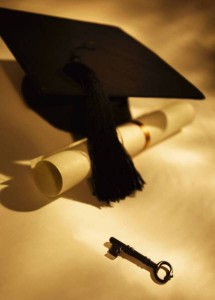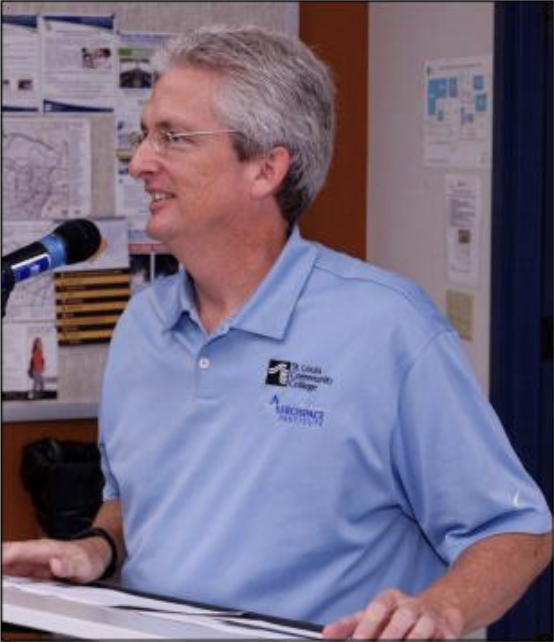Students benefit from challenge of Meramec Honors Program
 By: Kimberly Morice
By: Kimberly Morice
– Asst. Photo Editor Emeritus –
The 2012 graduating class at STLCC-Meramec included the largest group of Honors Program graduates since the program began in 1985. Twenty-six students graduated with the Honors Scholar designation.
“[The Honors Program] was designed and continues to be for students who want to be more than the standard academic track; it’s a place where students can push themselves. It’s not just for the overachiever or the students who did well in high school,” Eric Meyer, Honors Program Coordinator, said.
Meyer graduated with honors in the 90‘s and has been the Honors Program coordinator at STLCC-Meramec since 2007.
“I always like to say we’re in the business of creating honors students,” Meyer said.
Meyer, alumni of Meramec, said that he was never an ideal high school student, but the Honors Program helped him find his place at Meramec. He hopes other students find similar value in their academic career through the program.
“Meramec helps them get the confidence and creates them as college students,” Meyer said. “I was an example of that. I was a terrible high school student and I became a good student at Meramec. The honors program is a part of that; it’s helping either the standard student or the students who are unsure of themselves not only become college students but become honors students.”
Meyer meets with students who are considering the Honors Program during their time at Meramec.
“My favorites are the ones who say, ‘I don’t know, honors doesn’t sound for me.’ And I look at their transcript and say ‘No, it’s for you,’” Meyer said with a laugh.
Meyer said he has never had a student come back to him wishing they had never joined the honors program.
“There’s the intrinsic value and then the resonating value; they’re essentially one in the same. But the intrinsic value is you get more out of your education at Meramec for the same money and it looks darn good on your transcript,” Meyer said.
The Honors Program offers smaller classes with an average of 13-to-1 student-faculty ratio, which according to Meyer, allows for more one-on-one time with the instructors and fellow students, compared to if students found themselves in a class of 35 or 60 students.
“My example, just because it’s dramatic, is at Mizzou general psychology might be 150 students in a lecture. A standard general psych course at Meramec might have 60 students or 80 students in a lecture. In the Honors Program, you’re more likely to have 13, 14 or 15 students in a class – never more than 20,” Meyer said.
Meyer is confident that students who have experienced standard courses as well as honors courses throughout their time at Meramec will notice the difference in both learning and in the relationships created with the instructors.
“It’s just a completely different experience. You’re gonna get more out of the instructor, the textbook and the students,” Meyer said. “[Universities] want to see students who are enthusiastic about learning. The Honors Program and honors coursework demonstrates that. It’s not just you saying it; it’s proving it.”
In a typical year, 13 members of Meramec’s faculty teach honors courses in addition to their regular load of standard classes. Compared to the other STLCC campuses and most two-year institutions, Meramec has a much more developed Honors Program, offering nine to 12 honors sections each semester.
“Your typical honors instructor is not someone who will just challenge the students and see what happens,” Meyer said. “Being an honors instructor is sometimes more difficult because as hard as you challenge a student, you have to be willing to spend the time giving them that much support to meet that challenge.”
Meyer also spends time with students whose course time at Meramec is coming to a close, giving them advice on which universities to transfer to and what scholarships they can pursue.
“The other benefit is that students get to spend time with me talking about their transfer plans, and that’s huge I think,” Meyer said. “The first thing I ask them is, ‘Where are you going to transfer, what are you going to study and how are you going to pay for it?’ Often the answer to all three questions is, ‘I have no idea.’ And then we narrow it down and I start telling them what I know and who I know and I start telling them how to prepare themselves here at Meramec.”
Meyer said although the Honors Program is more work, the reward is high.
“I think that there’s this impression out there that students coming in from high school think that honors equals a whole lot of more work,” Meyer said. “I don’t deny that the Honors Program will be some more work but I always tell students that if they’re getting the 3.5 GPA or above, they probably won’t even notice the extra work.”











